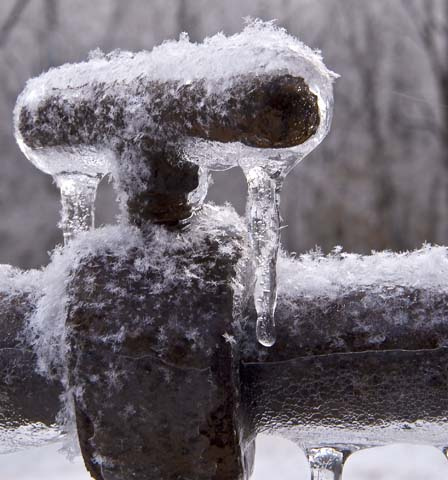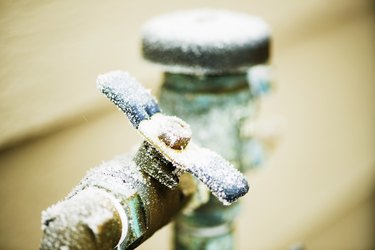Are you searching for tips concerning How To Avoid Freezing Pipes?

Cold weather can ruin your pipes, specifically by freezing pipes. Below's how to avoid it from taking place and what to do if it does.
Introduction
As temperature levels drop, the threat of icy pipes rises, potentially causing pricey fixings and water damages. Recognizing just how to stop frozen pipes is critical for house owners in cold environments.
Understanding Icy Pipes
What triggers pipelines to freeze?
Pipes ice up when subjected to temperature levels listed below 32 ° F (0 ° C) for prolonged periods. As water inside the pipelines ices up, it expands, taxing the pipe walls and possibly triggering them to burst.
Dangers and damages
Frozen pipes can result in water system disturbances, home damage, and costly repairs. Ruptured pipelines can flooding homes and cause considerable structural damage.
Indications of Frozen Pipes
Determining icy pipes early can stop them from bursting.
Exactly how to identify frozen pipelines
Look for reduced water flow from taps, unusual odors or noises from pipes, and visible frost on exposed pipes.
Prevention Tips
Shielding at risk pipelines
Cover pipelines in insulation sleeves or utilize heat tape to secure them from freezing temperatures. Focus on pipelines in unheated or exterior locations of the home.
Heating methods
Keep interior areas properly warmed, particularly areas with plumbing. Open closet doors to enable warm air to distribute around pipes under sinks.
Shielding Exterior Pipes
Yard hose pipes and outdoor faucets
Detach and drain pipes yard hose pipes prior to winter. Set up frost-proof faucets or cover exterior faucets with insulated caps.
What to Do If Your Pipes Freeze
Immediate activities to take
If you think icy pipes, maintain faucets open to ease stress as the ice melts. Use a hairdryer or towels taken in hot water to thaw pipelines slowly.
Long-Term Solutions
Structural modifications
Think about rerouting pipelines far from exterior walls or unheated areas. Add added insulation to attic rooms, cellars, and crawl spaces.
Upgrading insulation
Buy top quality insulation for pipelines, attic rooms, and wall surfaces. Proper insulation assists preserve regular temperature levels and reduces the risk of icy pipes.
Conclusion
Stopping icy pipelines needs aggressive actions and quick responses. By recognizing the reasons, signs, and safety nets, home owners can shield their pipes during winter.
6 Proven Ways to Prevent Frozen Pipes and Protect Your Home
Disconnect and Drain Garden Hoses
Before winter arrives, start by disconnecting your garden hoses and draining any remaining water. Close the shut-off valves that supply outdoor hose bibs and leave the outdoor faucet open to allow any residual water to drain. For extra protection, consider using faucet covers throughout the colder months. It’s also important to drain water from any sprinkler supply lines following the manufacturer’s directions.
Insulate Exposed Pipes
Insulating your pipes is an effective way to prevent freezing. Pipe insulation is readily available at home improvement stores and is relatively inexpensive. Pay close attention to pipes in unheated areas such as the attic, basement, crawl spaces, or garage. Apply foam insulation generously to create a buffer against the cold. You can also wrap your pipes in heat tape or thermostat-controlled heat cables for added warmth.
Seal Air Leaks
Inspect your home for any cracks or openings that could let in cold air. Seal any holes around the piping in interior or exterior walls, as well as the sill plates where your home rests on its foundation. Additionally, make sure to keep your garage door closed unless you’re entering or exiting. Leaving it open creates a significant air leak that can lead to frozen pipes.
Allow Warm Air Circulation
During cold snaps, it’s essential to allow warm air to circulate evenly throughout your home. Leave interior doors ajar to promote better airflow. Open kitchen and bathroom cabinets to help distribute heat consistently around the rooms. If you have small children or pets, be sure to remove any household chemicals or potentially harmful cleaners from open cabinets for safety.
Let Faucets Drip
A small trickle of water can make a big difference in preventing ice formation inside your pipes. When temperatures drop significantly, start a drip of water from all faucets served by exposed pipes. This continuous flow helps prevent the water from freezing. Additionally, running a few faucets slightly can relieve pressure inside the pipes, reducing the chances of a rupture if the water inside does freeze.
https://choateshvac.com/6-proven-ways-to-prevent-frozen-pipes-and-protect-your-home/

Do you enjoy reading about How to prepare your home plumbing for winter weather? Put a remark down the page. We would be happy to listen to your responses about this blog post. We hope that you come back again in the near future. Liked our blog entry? Please quickly share it. Help someone else discover it. Thanks a bunch for your time. Revisit us soon.
Call Today
 Ralph Macchio Then & Now!
Ralph Macchio Then & Now! Jennifer Love Hewitt Then & Now!
Jennifer Love Hewitt Then & Now! Erik von Detten Then & Now!
Erik von Detten Then & Now! Terry Farrell Then & Now!
Terry Farrell Then & Now! Ryan Phillippe Then & Now!
Ryan Phillippe Then & Now!